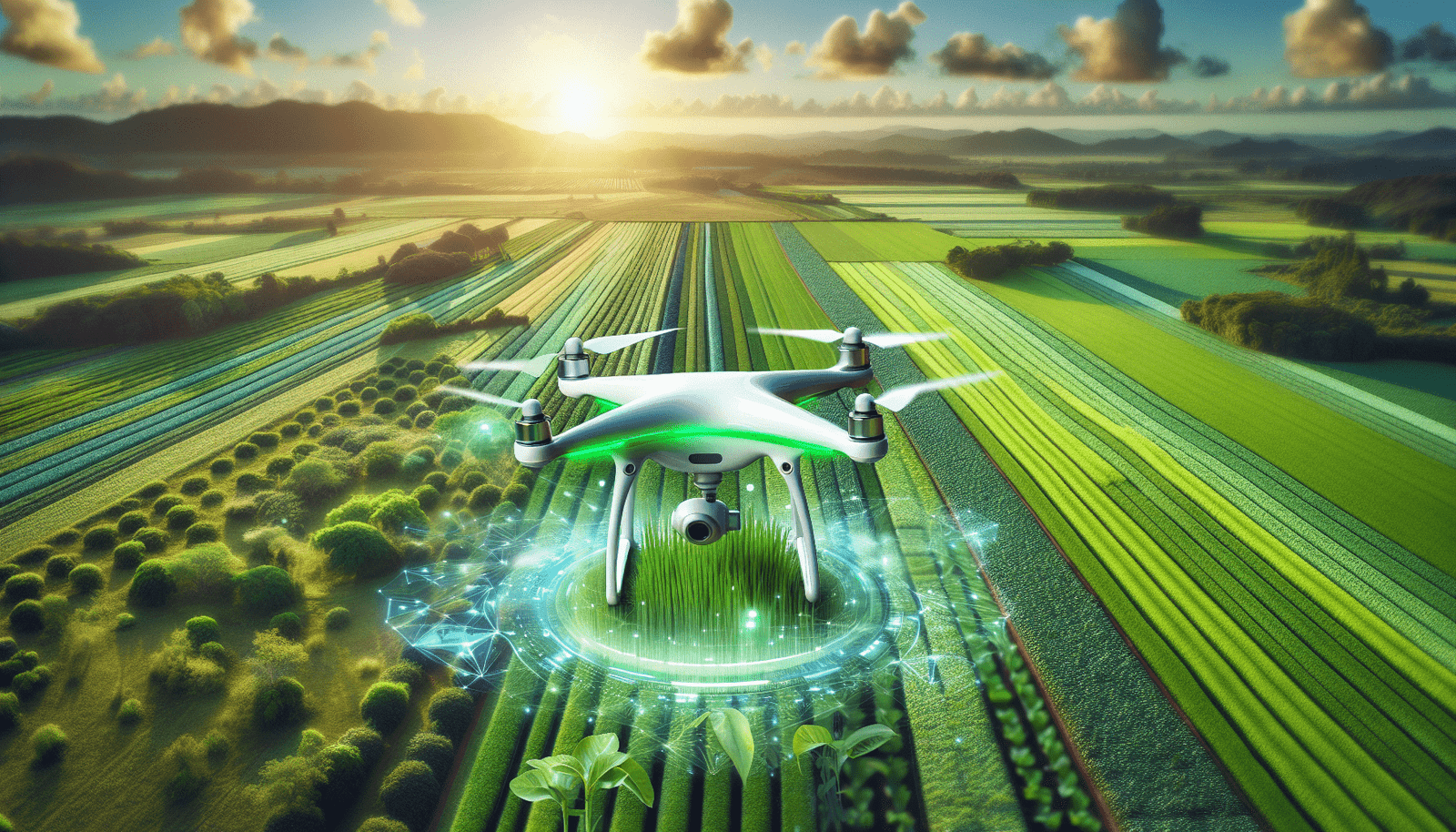Have you ever wondered how technology is changing the way we farm?
Understanding Smart Agriculture
Smart agriculture is becoming a buzzword in the farming community, merging traditional agricultural practices with cutting-edge technology. As I look at the rapid developments in this field, it’s fascinating to consider how these innovations are reshaping our food systems, promoting sustainability, and helping farmers to be more efficient.
What is Smart Agriculture?
At its core, smart agriculture involves the use of advanced technologies, such as sensors, data analytics, and automation, to improve agricultural practices. I think of it as a way to enhance productivity while minimizing environmental impact. This approach allows farmers to monitor their crops and soil conditions in real-time, leading to better decision-making.
Key Components of Smart Agriculture
There are several main components that make up smart agriculture, and understanding these can help me appreciate what makes it so revolutionary.
-
Internet of Things (IoT): This involves the use of interconnected devices that can send and receive data. I find it incredible that sensors placed throughout fields can transmit information about moisture levels, temperature, and crop health directly to farmers’ smartphones or computers.
-
Drones: Drones are becoming essential tools for modern farmers. They allow me to capture aerial images of my fields, helping me identify problem areas (like pest infestations or water shortages) that I might not see from the ground.
-
Big Data and Analytics: Collecting vast amounts of data from various sources enables me to analyze trends and make informed decisions. For example, by understanding weather patterns and soil conditions over time, I can predict the best times to plant or harvest my crops.
-
Automation and Robotics: This includes machinery that can perform tasks without significant human intervention. Tractors that can autonomously plow fields or robots that can pick fruits and vegetables are making farming much more efficient.
The Benefits of Smart Agriculture
As I look closer at the benefits of smart agriculture, it’s clear that the advantages are numerous. Here are some of the key benefits that I find most compelling.
Increased Productivity
One of the most significant benefits of smart agriculture is the potential for increased productivity. By using technology to monitor growth conditions and optimize resources, I can achieve higher yields. For example, precision agriculture techniques that allow me to apply water and fertilizers only where they are needed can lead to better crop performance.
| Benefit | Description |
|---|---|
| Higher Yields | Technology maximizes resources for crops. |
| Efficient Resource Use | Reduces waste through precision farming. |
| Early Problem Detection | Identifies issues before they escalate. |
Enhanced Sustainability
Sustainability is at the forefront of many discussions around food production today. I admire how smart agriculture practices can lead to more sustainable farming techniques. By reducing the use of chemical inputs and optimizing water usage, I can help protect our environment while still meeting food demands.
Better Decision-Making
With access to real-time data, I can make better decisions about my farming practices. The data helps me understand the best times for planting and harvesting, improving my overall strategy.
Challenges in Implementing Smart Agriculture
While the potential of smart agriculture is immense, there are also obstacles that I need to consider.
High Initial Costs
Although smart agriculture can lead to long-term savings and increased profits, the initial investment can be daunting. I need to weigh the costs of purchasing technology and equipment against potential future savings.
Technology Adoption
Not all farmers are familiar with the latest technology, which can slow down the implementation process. Some of my fellow farmers may require training and support to feel comfortable with new tools and systems.
Data Privacy Concerns
As I embrace technology, I also have to navigate concerns about data privacy. Protecting sensitive information related to my farming practices becomes crucial to ensure that my business remains competitive and safe.
Future Trends in Smart Agriculture Practices
Looking ahead, I can’t help but be excited about the trends that are shaping the future of smart agriculture.
Autonomous Machines
I anticipate that the use of autonomous machines will continue to grow. As technology improves, tractors and drones will become increasingly capable of performing complex tasks without human oversight.
Artificial Intelligence in Agriculture
Artificial Intelligence (AI) holds a significant promise for smart agriculture. By analyzing data patterns, AI can provide insights that I might not be able to see myself, allowing for more precise farming strategies.
New Crop Varieties
With advancements in biotechnology, I expect to see the development of new crop varieties that are more resilient to climate change and pests. These crops will complement smart agriculture techniques, leading to even better food security.
Sustainable Practices
The focus on sustainability will only intensify. As consumers become more environmentally conscious, I believe that smart agriculture will be essential for meeting their demands. The integration of eco-friendly practices in farming will continue to evolve.
Blockchain Technology
Blockchain could revolutionize traceability in agriculture. By adopting this technology, I could easily track my produce from farm to table, ensuring food safety and transparency.
Conclusion
Reflecting on the future of smart agriculture, it’s evident that technology will play an indispensable role in shaping the farming landscape. As I continue to learn about these practices, I embrace the opportunity to enhance productivity, sustainability, and efficiency in my own agricultural endeavors. The path ahead may indeed be filled with challenges, but the potential rewards of smart agriculture practices make it a compelling journey worth embarking on.
In the end, I look forward to being part of a farming community that adopts these revolutionary practices, contributing to a sustainable and efficient food system for generations to come. It’s an exciting time to be involved in agriculture, and I can’t wait to see where this journey takes us all!






